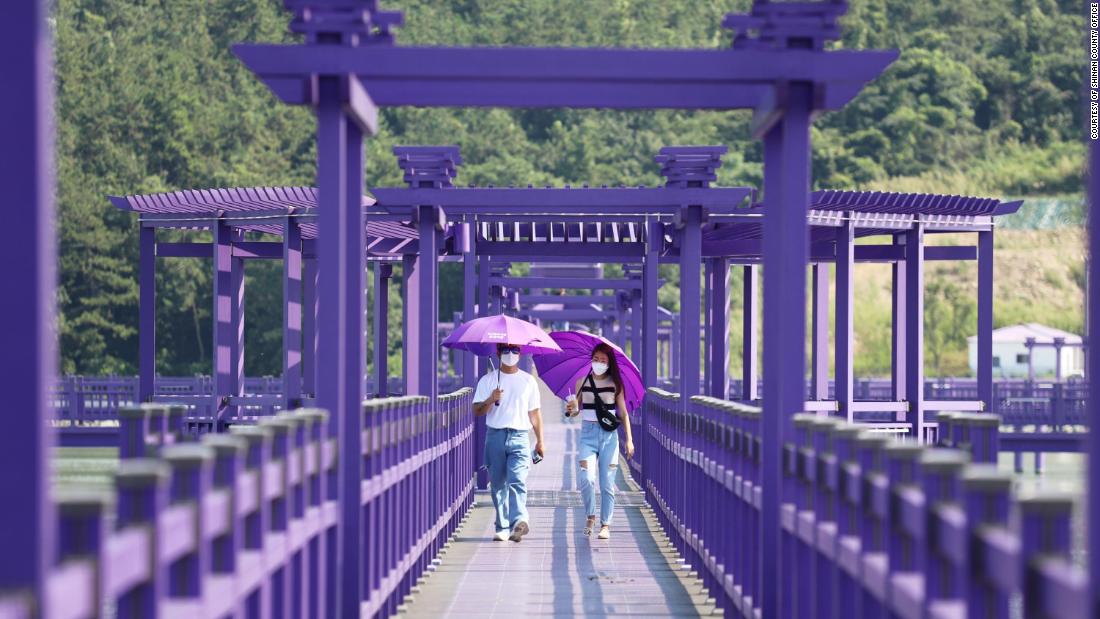(CNN) – A South Korean agricultural community has reinvented itself by becoming a perfect attraction for the Instagram era.
And with the country’s borders essentially closed due to the coronavirus pandemic, people hungry for travel are migrating to the area. Between June and August 2020, more than 100,000 visitors came to Banwol Island, a 20% jump from the previous year.
Since 2018, more than 490,000 guests have visited the islands.
The project was planned in 2015 as part of the South Jeolla Province brand initiative to “create attractive island destinations” and was inspired by the purple bell towers (also known as bell towers) that are native to the area.
The small islands of Banwol and Bakji have less than 150 residents in total. Since the beginning of the purple project, farmers began to cultivate kohlrabi and beet, both branded. The local government planted 30,000 New England asters and 21,500 square meters of lavender fields.
Visitors can walk between the two islands via – you may have noticed this – another purple bridge.

The purple bridge was repaired and repainted in early 2020.
Courtesy of Shinan County Office
Banwol’s risky but beautiful move seems to be paying off. South Koreans who leave the country and return are subject to a two-week quarantine when they return, so most residents are opting for domestic tourism.
